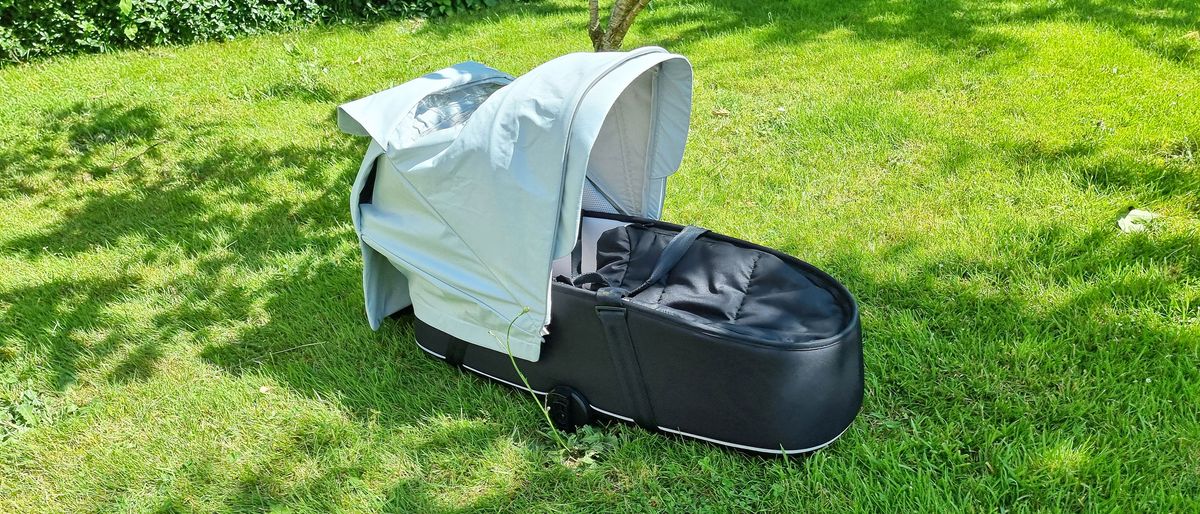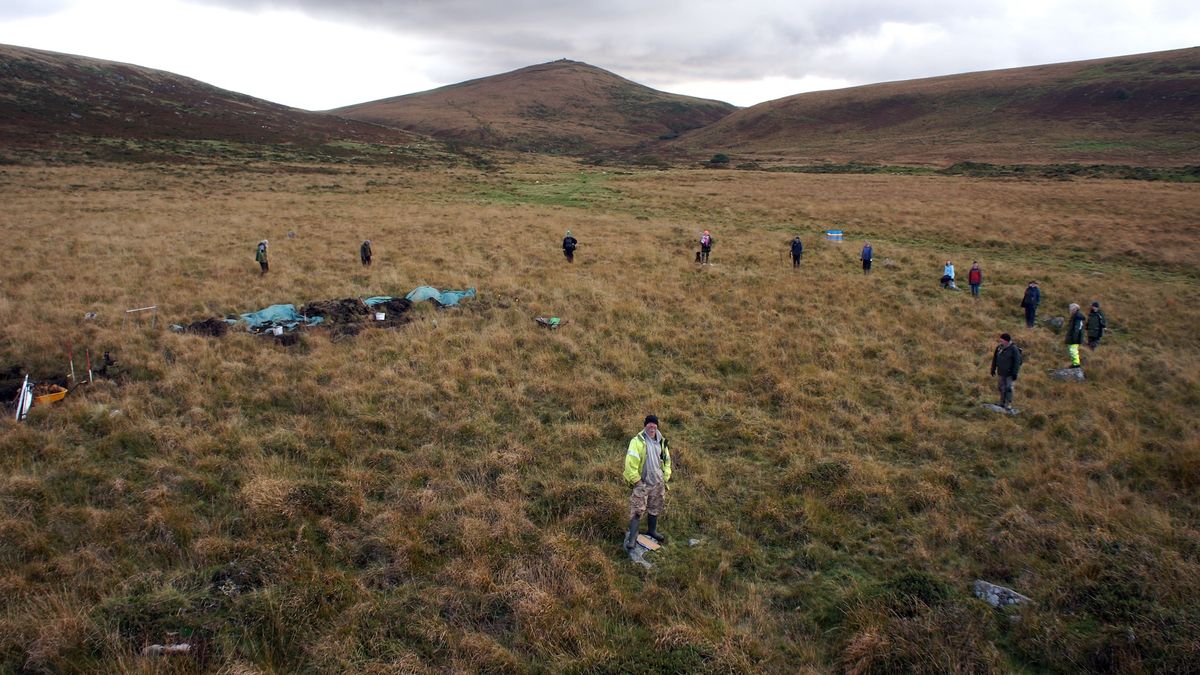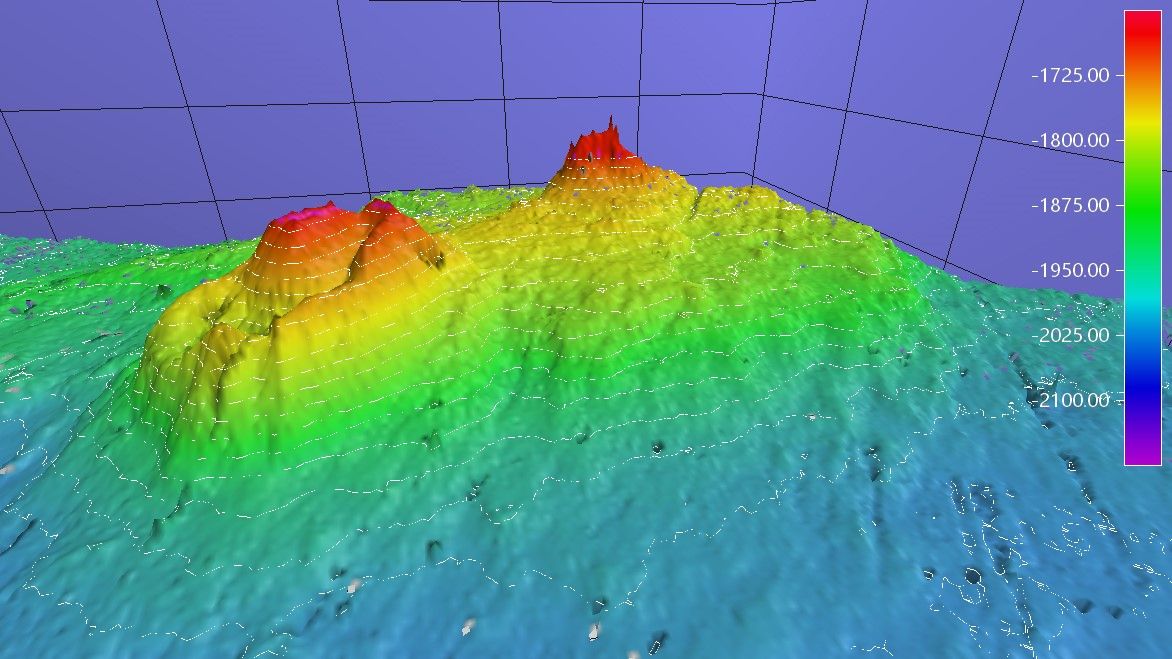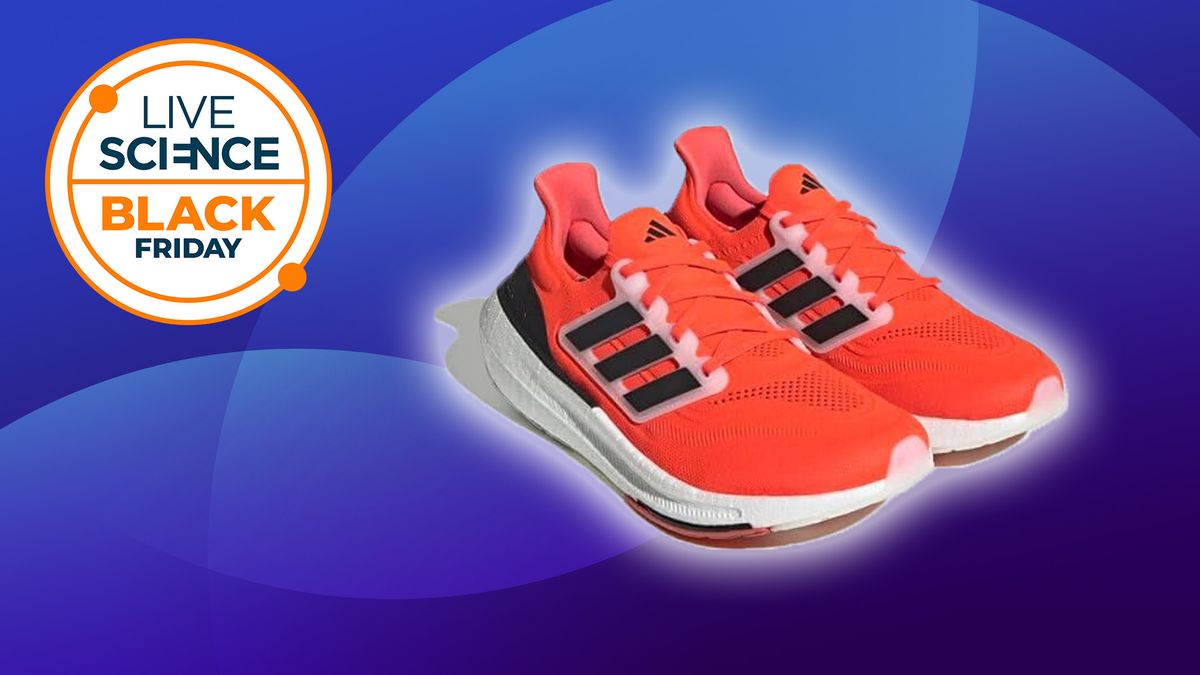The Thule Shine Air Purifier Canopy is the first stroller accessory designed to help shield babies and young children from air pollution. Put simply, it is a mobile air purifier. Just like much bigger domestic appliances, it works by trapping airborne particles — dust, pollen and pet dander, for example — to provide cleaner, fresher air for your child.
The Thule Shine Air Purifier Canopy promises to deliver more than 150 liters of purified air every minute, without disturbing the baby with excessive noise or strong airflow. But is it a game changer for parents living in areas with poor air quality, or is it just a gimmick?
We are not experts in baby stroller design and functionality, and do not claim to be; nor are we able to determine whether there are any health benefits to using the Thule Shine Air Purifier Canopy. But we do know a thing or two about spotting the very best air purifiers — and, at least in theory, this innovative device has what it takes.
Developed in partnership with the Swedish technology start-up bubl.AB, this mobile air purifier uses near-silent fans and Efficiency Particulate Air (EPA) filters capable of capturing up to 90% of airborne pollutants. The Thule canopy is powered by a battery that can last up to 16 hours on a single charge, and it can be controlled remotely via an app. It also has a built-in air quality sensor and three fan speeds.
We tested the Thule Shine Air Purifier Canopy in line with our air purifier testing protocol, using an industry-grade Perfect Prime air particle monitor and decibel-counting apps. We also looked at its features, ease of use and connectivity with third-party devices. Read on to find out how we got on.
Thule Shine Air Purifier Canopy review
Thule Shine Air Purifier Canopy: Set up and usability
- Available only in the UK and select European countries
- Compatible only with the Thule Shine bassinet and pushchair
- Confusing, picture-only instruction manual
This mobile air purifier was only announced by Thule in July last year, so it is still very much in its infancy (pun intended). As we were writing this review, the Thule Shine Air Purifier Canopy was available only in the United Kingdom (for £429.99) and select European countries (for roughly $490). It is unclear when this product will go on sale in the U.S.
We also need to point out that the canopy is only compatible with the Thule Shine bassinet (intended for infants and babies up to approximately six months), and the Thule Shine stroller, which was designed with toddlers in mind. These two products are available to purchase in the U.S., and cost $199.95 and $599.95, respectively.
The setup process is relatively straightforward — once you figure it out, that is. The paper manual provided in the package is picture-only, in a form that closely resembles IKEA’s how-to assembly booklets. The problem is that these depictions are somewhat confusing. There are no written instructions to refer to, either. For such a novel product, this lack of clarity is a massive downside.
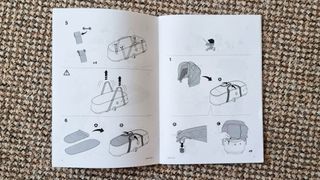
But again, getting the Thule canopy up and running is not too difficult. First, you have to charge the power bank provided in the package — it will function as a removable battery. Then, you will need to insert the EPA filters, download the Thule app and sync it with the canopy, either by scanning a QR code provided on the air purifier or using the product’s serial number.
Thule Shine Air Purifier Canopy: Design
- Light, compact and relatively discreet
- Conveniently controlled with the panel at the back of the canopy
- Lids for filter replacements feel flimsy
- Canopy comes with a maximum sun protection rating for fabrics
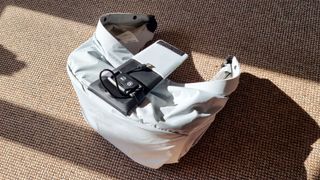
It is tricky to assess the design of the Thule Shine Air Purifier Canopy knowing that it is the first of its kind. However, it does seem to be doing some things right. The built-in air purifier unit is relatively small, light and discreet. It does not stick out of the canopy or move within it, even when the canopy is folded up. The control panel is located at the back of the canopy and hidden behind a flap, both for parents’ convenience and to keep it out of the baby’s reach. We also liked that the Thule Shine Air Purifier Canopy offers UPF 50+ UV protection — the maximum sun protection rating for fabrics.
What we did not like, however, was the process of replacing filters. The two lids that cover them are tricky to pull out and even trickier to put back in. You have to wedge in the gaps and gently push them up to access the filters, and that is not easy given how tiny they are. We also found the lids to be relatively fragile and prone to damage. That said, they remained intact and in place throughout the testing period.
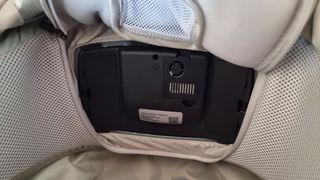
Speaking of the EPA filters, Thule recommends replacing them around three to four times a year, depending on the usage. Each two-pack costs £44.99, which is on the expensive side, but not wildly different from other air purifiers we tested.
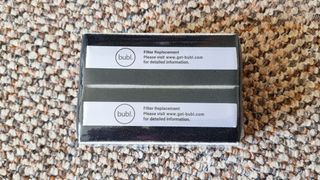
Thule Shine Air Purifier Canopy: Features
- Controlled remotely via the Thule app
- Three fan speeds
- Air quality sensor, but no auto mode
The Thule Shine Air Purifier Canopy is not overwhelmed with features, but it has most of the basic settings you can expect from an air purifier these days. It has three fan speeds, a 2.5-micron air particle sensor and a filter life indicator. The canopy can be controlled remotely, too. However, the Thule canopy does not have an auto mode. Even though it comes with a built-in sensor that measures the amount of airborne particles both inside and outside of the canopy, it does not use these values to adjust the fan speed.
Also, while the app can continuously display air quality readings from inside the canopy, for measurements of air quality around the bassinet you have to do a separate spot check — the Thule Shine Air Purifier Canopy can’t measure both of these values at the same time. We found this to be a glaring oversight.
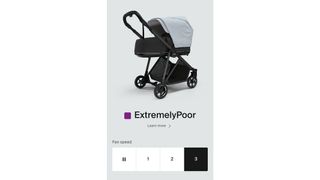
Thule Shine Air Purifier Canopy: Performance
- Up to 16 hours of battery life
- Good air-cleaning performance in at-home tests
- Whisper-quiet
- Gentle airflow
The Thule Shine Air Purifier Canopy performed surprisingly well in our at-home tests. However, we only tested it in combination with the Thule Shine Bassinet, mainly indoors and always in dry conditions. It is hard to assess how the Thule canopy would perform in real-life scenarios.
To start with, we were impressed by its battery life. Thule promises up to 16 hours of use on a single charge, and that is probably right. We say “probably” because we had no battery life indicator to refer to. However, we tested the canopy over several days and during that time we did not have to top up the battery even once. Moreover, we accidentally left the canopy running for hours on end on at least two separate occasions. We simply did not realize it was switched on — which brings us to the next point.
The Thule Shine Air Purifier Canopy is surprisingly quiet, or at least much quieter than most air purifiers we tested. It makes a pleasant, gentle hum, even when kicked into the highest fan speed. During our tests, we measured the sound level with a decibel-counting app placed where a baby’s head is supposed to be. On the lowest fan speed, we noted 28 decibels (dB), which is comparable to a whisper. At the highest fan speed, we noted 40 dB — the equivalent of a quiet library or refrigerator humming. We also found the airflow to be surprisingly gentle and unobtrusive. However, we do not know exactly how comfortable that would be for a baby.
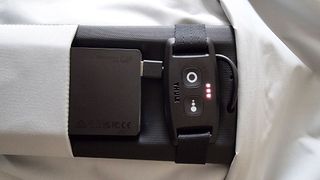
The Thule Shine Air Purifier Canopy impressed us with its air-cleaning capabilities. We conducted a series of performance tests using an industry-grade air particle monitor, a piece of kit capable of detecting pollutants as small as 0.3 microns. In each of these tests, we compared the measurements taken outside of the bassinet with data we obtained from the inside of the bassinet (where a baby’s head is supposed to be) after running the canopy for 15 and 30 minutes.
We started with ambient tests. We placed the Thule Shine canopy in a closed, middle-sized room. We measured the room’s air quality and then ran the canopy for 15 and 30 minutes at the lowest fan speed, taking note of any air quality changes inside the bassinet. We also did control measurements of the room’s air quality to ensure it stayed the same throughout the test. After 15 minutes, the number of air particles measuring 0.3 microns decreased by 11%, while 2.5-micron particles were reduced by 80%. After 30 minutes, these values rose to 90.5% and 99.99%, respectively.
Then, we repeated the ambient test at the highest fan speed. Within half an hour, the Thule Shine canopy filtered out 92.5% of 0.3-micron particles and all of the particles measuring 2.5 microns. No 10-micron particles were detected at any stage.
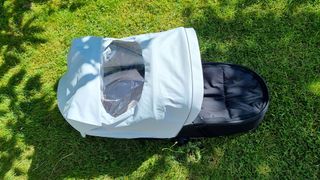
Next, we challenged the Thule canopy to smoke tests. We used five burnt matches to create heavy smoke pollution in an enclosed, middle-sized room. We measured the room’s air quality and then ran the canopy at the highest fan speed for 15 and 30 minutes. After 15 minutes, particles measuring 0.3 microns were down by a whopping 96.78%, and this value rose to nearly 98.5% after 30 minutes.
We noted a similar trend with 2.5-micron particles: they dropped by 97.04% after 15 minutes, and then by 98.65% after 30 minutes. The biggest 10-micron particles were reduced by an impressive 99.99% after just 15 minutes. When we repeated the smoke test using burnt incense sticks, we obtained similarly good results.
On the other hand, we were left underwhelmed by the Thule app. In all fairness, it was easy to use and refreshingly straightforward in design. However, the app connectivity could be better. For example, we noticed that the air purifier was sometimes very slow to respond to our commands from the app.
Thule Shine Air Purifier Canopy: Verdict
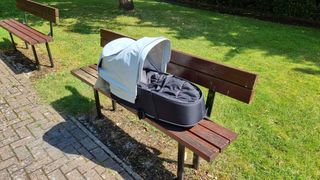
The Thule Shine Air Purifier Canopy has a lot of potential. This innovative stroller accessory delivered a surprisingly good performance in our at-home tests. It effectively reduced the levels of airborne particles inside the canopy, without being noisy or generating a disruptive airflow. We also found it compact, discreet and relatively easy to use.
However, it is difficult to determine how the Thule Shine Air Purifier Canopy would perform in real-life situations. There are many different weather conditions and air pollutants to account for, and we did not test it for long enough to assess its efficiency over time. Still, the Thule canopy could be a sign of an upcoming shake-up in the air purifier market.
Thule Shine Air Purifier Canopy: How we tested
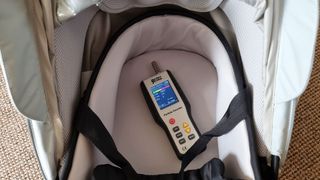
We tested the Thule Shine Air Purifier Canopy in combination with the compatible Thule Shine Bassinet, mainly indoors and in dry conditions. Over several days, we assessed its setup, design, features, ease of use and connectivity with third-party devices. We also used a decibel-counting app to measure its noise levels at different fan speeds.
Finally, we put the Thule Shine Air Purifier Canopy through a series of performance tests using an industry-grade air particle monitor, a piece of kit capable of detecting pollutants as small as 0.3 microns. In each test, first, we took measurements outside of the bassinet, then we compared them to measurements that we obtained by placing our monitor inside the bassinet, right at the front where the baby’s head is supposed to be.
First, we conducted ambient tests. We put the Thule Shine Air Purifier Canopy in a medium-sized room, with a window closed. We measured air quality in the room and then in the bassinet after running the canopy for 15 and 30 minutes. Next, we used matches and incense sticks to create smoke in an enclosed, medium-sized room. We started by obtaining air quality measurements in the room, then ran the canopy for 15 and 30 minutes, taking notes of any changes to the air quality measurements inside the bassinet.




